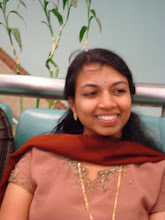Habitation is the basic need of every living being. Man builds houses for his living. Any piece of land and structure built on it is known as 'Vastu'. It has been derived from the word 'Vaas' which means 'to live'. Vaastu shastra is an ancient science which helps one to get the natural benefits freely offered by the five basic elements of the universe in which we all live. These basic elements are Akash (SKY), Prithvi (EARTH), Paani (WATER), Agni (FIRE), and Vayu (WIND). Vastu Shastra can be applied by keeping in harmony with these basic five elements of nature. It is an edifice science that was developed by our learned people thousands of years ago. Its application today is purely architectural and its principles are based on becoming one with nature. Like astrology and palmistry it is a vast & complicated science, easily misunderstood by most people.
SPACE : Internal space of a building should be utilized in such a manner that it should not obstruct the ventilation and entry of Sun light. Therefore the height of the ground floor, planning upper stories, multiplex, cupboards, other internal fixtures, placement of furniture, bed etc. are decided accordingly.
Eight Directions:
NE or Ishaan Kon (Water): Pooja room, water storage tank, boring, lawn, portico, Drawing room, water supply connection.
East: Main gate, living room, bathroom, kitchen, guestroom, open space, balcony, Tulsi plant.
SE or Agni Kon (Fire): Office, fire, toilet, plants, basement, stairs, generator / inverter storeroom, clothes.
South: Bedroom, room to store heavy articles like machines etc., overhead water tank, big trees, godown, toilet, paying guest / tenant.
SW or Nairitya Kon (Earth): Arms and ammunition, room to store raw materials, sleeping room, room for father or elder brother, stairs, overhead water storage tank, trees.
West: Dinning room, septic tank, stairs, water storage tank on the ground, toilet cum bath, drawing room, living room.
NW or Vaayaya Kon ( Air ): Cattle and animals, grains storage, kitchen, living room, stairs, medium sized trees.
North: Treasury, finished material store, reception room, children’s room, recreation and entertainment room, gas plant or connection, swimming pool.

